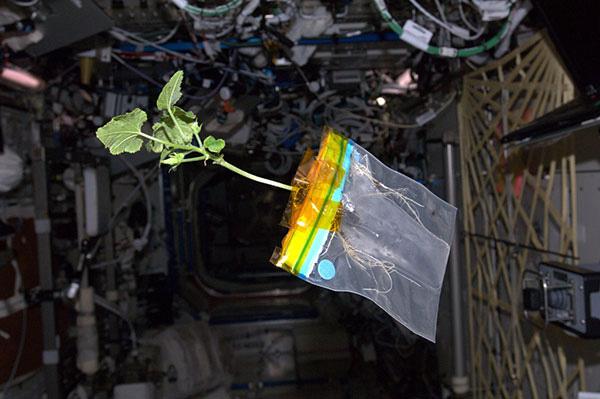After the 3D pizza printer for astronauts, NASA aims to grow a vegetable garden 230 miles above the Earth. Last year American astronaut Don Pettit cultivated a zucchini plant on the International Space Station, describing the farming on the blog Diary of a Space Zucchini. This successful experiment led the way to space farming, with the project Veggie: Vegetable Production System.
In December, NASA plans to launch a kit for farming six romaine lettuce plants, selected because they grow quickly and contain antioxidants. The lettuce will be grown under bright pink LED lights, and will be ready to harvest after just 28 days.
With this project, the most technological job in the world goes Back to Tribe. The dream is to create a regenerative growth system, so food could be continually grown on the space station. Scientists are planning to send other vegetables into space, such as radishes, snap peas and a special strain of tomato, designed to take up minimal space. Unfortunately the astronauts aren't allowed to eat the first plants grown in space due to strict microbe standards. Instead, the plants will be frozen and stored for testing back on Earth.
The benefits of space farming are many. It saves money (it costs $10,000 a pound to send food to the space), varies the astronauts' diet and improve general wellness and, because plant care is therapy for the human psyche, protects against stress and discomfort. Not to mention the satisfaction of growing your own food.
We have always wondered about the presence of plant life on other planets. Soon we'll know the answer: it was humans who brought it.

Share your thoughts and join the technology debate!
Be the first to comment